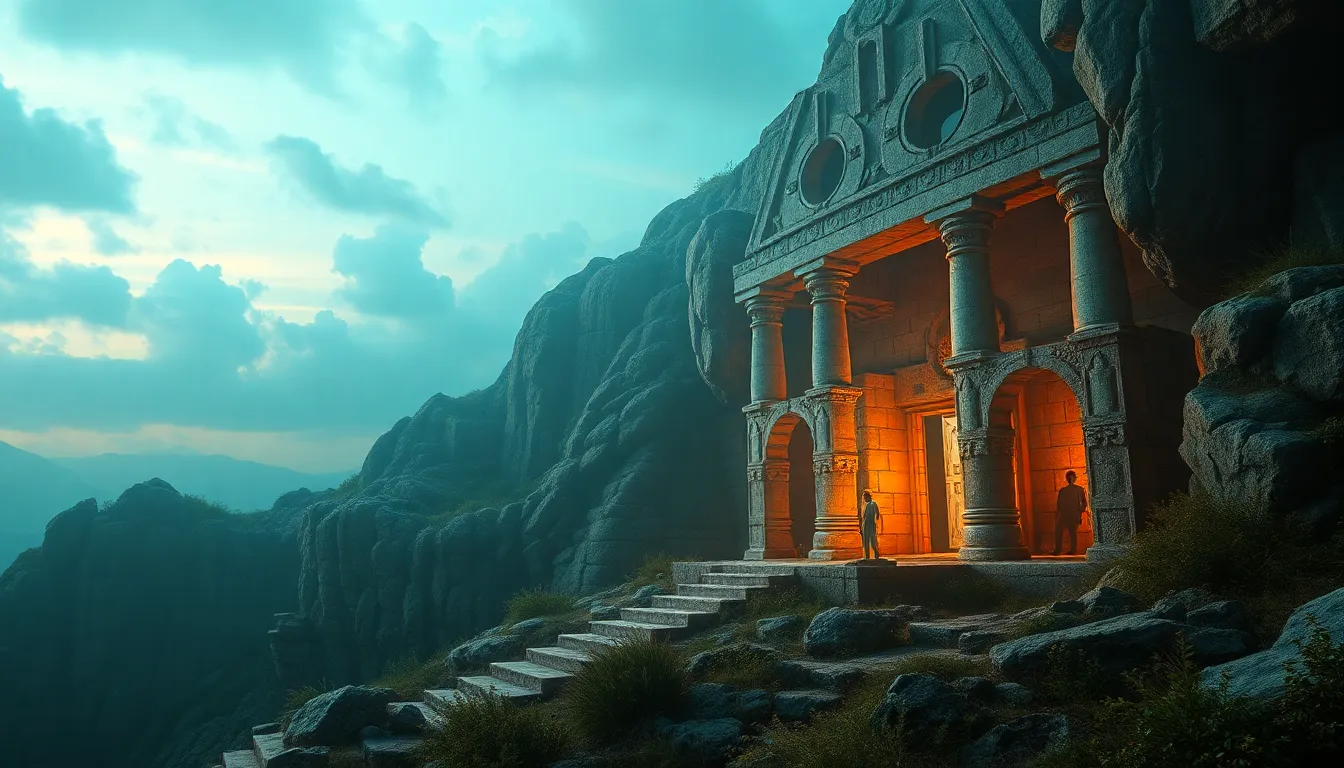The Most Unique Myths of Ancient Deities and Their Origins
Introduction to Ancient Deities
Ancient deities are the divine figures revered in various cultures around the world, embodying the beliefs, values, and traditions of the societies that worship them. These deities often represent natural forces, human attributes, and the complexities of existence, playing a crucial role in the spiritual and social lives of ancient peoples.
Myths surrounding these deities serve not only as stories but also as foundational narratives that shape societal beliefs and values. They provide insights into the human condition, offering explanations for life’s mysteries, moral teachings, and reflections of cultural ideals.
The Creation of the World: Cosmic Myths of Ancient Deities
Creation myths are a fascinating aspect of ancient mythology, offering a glimpse into how different cultures perceive the origin of the universe. Notable examples include:
- Egyptian Mythology: The god Atum emerged from the chaotic waters of Nun, creating the world through his thoughts and words.
- Mesopotamian Mythology: The Enuma Elish narrates how the god Marduk defeated the chaos monster Tiamat and created the world from her body.
- Hindu Mythology: The Rigveda describes the cosmic being Purusha, whose body was sacrificed to create the universe and all living beings.
These myths often emphasize themes of chaos and order, illustrating the struggle between opposing forces and the eventual emergence of life and structure. They reveal cultural values regarding creation, existence, and the relationship between deities and humanity.
The Trickster Archetype: Deities Who Break the Rules
Trickster gods are unique figures in mythology, known for their cunning, mischief, and ability to disrupt the status quo. Key examples include:
- Loki (Norse): A shape-shifter and agent of chaos, Loki challenges the gods and often finds himself at odds with them.
- Coyote (Native American): A central figure in many Native American myths, Coyote embodies both wisdom and folly, teaching lessons through his antics.
- Hermes (Greek): The messenger of the gods, Hermes is known for his cleverness and ability to navigate between the mortal and divine realms.
These deities challenge societal norms and expectations, often serving as catalysts for change and transformation. Their stories reflect the complexities of human behavior and the importance of balance between order and chaos.
Deities of Love and War: The Duality of Ancient Gods
The duality of love and war is encapsulated in the figures of deities who embody these opposing forces. For instance:
- Aphrodite (Greek): The goddess of love and beauty, Aphrodite represents the power of attraction and desire.
- Mars (Roman): The god of war, Mars symbolizes the brutality and glory of conflict, often depicted as a protector of the Roman state.
These deities illustrate the complexities of human emotion and conflict, showing how love can lead to war and how war can be driven by love. Their myths serve as reminders of the intricate interplay between these powerful forces in human life.
Nature and Fertility: Earth Deities and Their Myths
Nature and fertility deities are central to agricultural societies, reflecting the importance of the earth’s cycles. Prominent examples include:
- Gaia (Greek): The personification of the Earth, Gaia is revered as the mother of all life.
- Demeter (Greek): The goddess of the harvest, Demeter’s myth revolves around the changing seasons and the cycle of life and death.
- Pachamama (Incan): A goddess of fertility and agriculture, Pachamama is honored for her role in providing sustenance and nurturing the earth.
These deities represent the deep connection between humans and the natural world, emphasizing the need for respect and reverence towards the environment and the cycles of life.
The Afterlife: Myths Surrounding Death and Rebirth Deities
Deities associated with the afterlife offer insights into how cultures perceive death and the journey beyond. Notable figures include:
- Osiris (Egyptian): The god of the afterlife, Osiris is associated with resurrection and eternal life, symbolizing hope for the deceased.
- Yama (Hindu): The god of death, Yama oversees the passage of souls to the afterlife and is often depicted as a guide for the departed.
These myths reflect cultural perspectives on death, burial practices, and the belief in an afterlife, illustrating how societies cope with mortality and the unknown.
Animal Symbolism in Deity Myths
Many ancient deities are depicted with animal heads or as animals themselves, symbolizing various attributes and powers. Examples include:
- Anubis (Egyptian): The jackal-headed god associated with mummification and the afterlife, representing protection and guidance for the dead.
- Ganesh (Hindu): The elephant-headed god of wisdom and remover of obstacles, symbolizing intelligence, strength, and adaptability.
Animal symbolism in mythology highlights the connection between humans and the natural world, emphasizing the traits and qualities that these animals represent.
The Influence of Geography on Deity Myths
The characteristics of deities are often shaped by the local geography and climate of the cultures that worship them. For instance:
- Sea Gods: Cultures near oceans often worship deities like Poseidon (Greek), reflecting the importance of the sea for sustenance and travel.
- Mountain Gods: In regions with mountains, deities like Zeus (Greek) are often associated with storms and the sky, embodying the power and majesty of the mountains.
This geographical influence underscores how the natural environment shapes human beliefs and the traits attributed to their gods.
The Evolution of Myths: From Oral Tradition to Written Texts
The transition of myths from oral storytelling to written records marks a significant evolution in the preservation and interpretation of ancient deities. As societies developed writing systems, myths were documented, allowing for greater consistency and spread of ideas. Historical events, such as conquests and cultural exchanges, also influenced the reinterpretation of myths, adapting them to new contexts and beliefs.
Conclusion: The Enduring Legacy of Ancient Deities and Their Myths
The myths of ancient deities continue to resonate with modern societies, reflecting timeless themes of creation, conflict, love, and the human experience. These stories not only shaped the cultures from which they originated but also provide valuable insights into the complexities of human nature and our relationship with the world. As we explore these unique myths, we uncover the rich tapestry of beliefs that have influenced generations and continue to inspire awe and reflection today.




